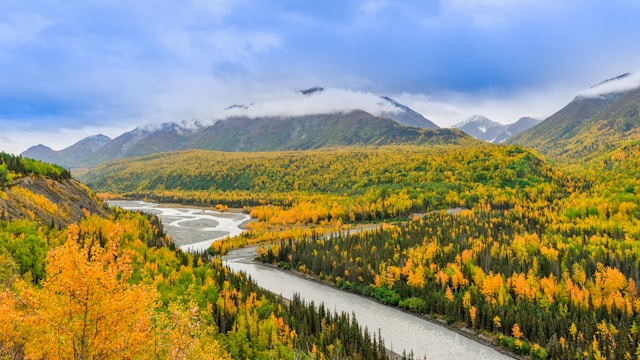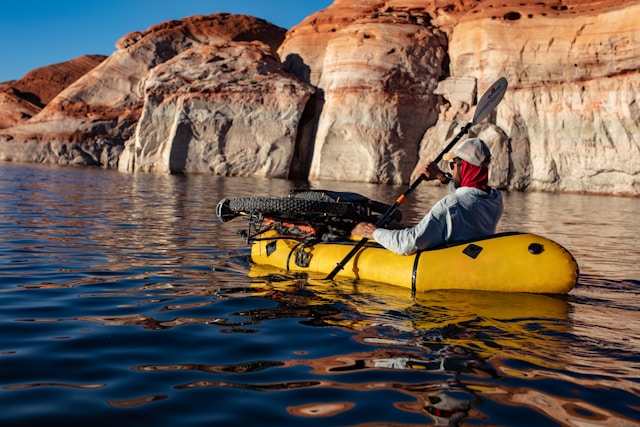Hey everyone, Anya here! Today, let’s dive deep into something that’s near and dear to my heart – packrafting. It’s not just a sport; it’s a blend of ingenuity, adventure, and a deep connection with the wild. So, grab a cup of your favorite outdoor beverage (mine’s always strong coffee!), and let’s explore the fascinating journey of packrafting.
The Humble Beginnings: Necessity as the Mother of Invention
So, how did this all start? Well, the roots of packrafting aren’t exactly in recreational fun. Imagine needing to cross water bodies in harsh, remote environments – that’s where the earliest versions of packrafts come into play. The real “aha!” moment came in the 1840s, when a chap named Peter Halkett designed a boat that was basically a waterproof cloak that inflated into a raft. Talk about multi-functional gear!
These early packrafts were all about portability and survival. Can you picture explorers and trappers in the 19th century relying on these for navigating rivers and lakes? Its pretty impressive, right? These rafts allowed them to traverse vast landscapes, combining land and water travel seamlessly. They weren’t exactly built for comfort or speed, but they were lifesavers.
Alaska: The Birthplace of Modern Packrafting?
Fast forward to the mid-20th century, and we find ourselves in the rugged terrain of Alaska. Some say that Alaska is where modern packrafting really took off. Legendary figures like Dick Griffith were using inflatable rafts for their epic adventures in the 1950s. These guys were pushing the limits of what was possible, combining hiking and paddling in the Alaskan wilderness.
And of course, I can’t forget to mention that Alaskans really took the concept to the next level. They needed gear that could handle the unpredictable conditions and remote locations. This demand led to innovations in raft design and materials, setting the stage for the packrafting boom we see today.
Innovation in Materials and Design
The real game-changer, though? You guessed it – innovation in materials. Early packrafts were limited by the technology available at the time, but the introduction of neoprene and urethane-coated nylon changed everything. I remember my first packrafting trip using a boat made with some pretty rudimentary materials, and let me tell you, the difference between that and the modern fabrics is night and day!
The 1980s were a turning point, with companies like Curtis Designs creating rafts specifically for more demanding waters. These innovations, coupled with the rise of ultralight trekking, fueled the sport’s growth. As materials and design evolved, more robust and adaptable packrafts were created, piquing the curiosity of outdoor enthusiasts all around the world.
The Packrafting Boom: A Sport for Everyone
The real surge in popularity came in the 21st century, and honestly, I think it’s because packrafting opens up so many possibilities for adventure. The versatility and portability of modern packrafts have made it accessible to a wider audience.
Now, we have packrafts that can handle everything from calm lakes to Class V whitewater. Companies like Alpacka Raft have been at the forefront, constantly pushing the boundaries of design and functionality. From TIZIP zippers to innovative hull designs, they’ve transformed packrafting into a legitimate adventure sport. Plus, there’s a growing community of packrafters sharing tips, stories, and epic adventures online, which only adds to the excitement.
Looking Ahead: The Future of Packrafting
So, what’s next for packrafting? I think we’ll see even more innovation in materials and design, making packrafts lighter, more durable, and more versatile. There is a huge focus on sustainability, which is really good. I hope to see packrafts become even more accessible, with more people discovering the joy of combining hiking and paddling in remote wilderness areas.
Anyway, folks, that’s a quick look at the history and evolution of packrafting. I hope you found it as interesting as I do! If you have any questions or stories to share, please leave a comment below. And as always, stay safe and happy adventuring!
Happy Trails!
Anya Petrova




